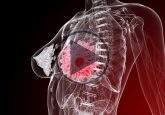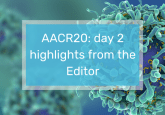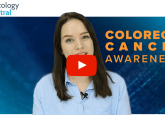Breast cancer: signs, symptoms & risk factors
Discover the signs, symptoms of breast cancer as well as its incidence and risk factors in this video with Macmillan Consultant Nurse Victoria Harmer (Imperial College Health Care NHS Trust, UK).
Would you like to discover more breast cancer content? Click below:
- Infographic: Triple-negative breast cancer
- Podcast: Exploring neoadjuvant treatment options for luminal breast cancer
Transcript:
Hi, I’m Vickki Harmer, a Macmillan Consultant Nurse in Breast Care at Imperial College Healthcare NHS trust.
We’ve decided to do a video with Oncology Central to support Breast Cancer Awareness Month and this video will hopefully enlighten you on the NHS breast screening program and also how to be a bit more breast aware.
The breast is a mixture of breast tissue and fat, which lies on the muscle. Inside the breast, there are about twelve to fourteen lobules which go down through the ducts and come out at the nipple.
There are just under half a million new diagnosis of breast cancer each year in Europe and the estimated number of people that die are 143,000.
In the UK breast cancer is the most commonly diagnosed cancer with over 55,000 women and about 400 men diagnosed each year.
So that translates to about one in eight women in the UK who will be diagnosed with breast cancer at some point in their life. However, more women than ever surviving breast cancer and that’s down to better awareness, better screening and better treatments.
The breast awareness five-point code is really important, and it’s as follows:
- Know what is normal for you
- Look and feel
- Know what changes to look out for
- Report any changes without delay
- Get screened if you’re aged 50 years or over
So what should you be looking out for?
- You need to focus on any change in shape or size of one or both breasts
- Look out for changes in one or both nipples and that includes the appearance, the direction that it points and if there’s any discharge
- Check to see if there’s any dimpling or puckering in the skin of either of the breasts and also if there are any lumps
- Dry skin, eczema, thickening of the breasts or around the armpit and constant pain would also be worth reporting
There are a number of risk factors for breast cancer, the main two are being a woman and increasing age. Using HRT for over 10 years can also increase your risk of breast cancer as can a family history. There are also factors such as alcohol intake or a high BMI.
So breast cancer risk factors can be modifiable. For example the diet that you take, your weight, any exercise you choose to take or not, if you choose to smoke, drink alcohol or use estrogen and non-modifiable such as genetic disposition, increasing age and being a woman.
If you do find a lump and report it to your GP, they will refer you to the breast service. There you will see a clinician who will examine you and examine your breasts and then order a mammogram and/or an ultrasound. If there is a lump they will also take a biopsy and it’s the pairing up of all of these tests that allow us to make a diagnosis of cancer.
The other route where breast cancer is diagnosed is through the NHS breast screening program. This was set up in 1988 with the aim of reducing mortality by 25% in the population screened. Women aged 50–70 are invited every 3 years for a mammogram and if you’re over 70 then you can certainly ask to be referred by your GP or the nearest screening centre to you.
Over 2 million women are screened annually and 15,000 breast cancers are diagnosed through the screening program in the UK each year. That translates to an estimation of saving 1300 lives per year.
It is important to attend your breast screening appointment when invited and we usually find that women who are basically concerned about their health are more likely to get screened. We know that partner gender is not associated barriers to screening and that there’s a strong association between academic women and breast screening. Vulnerable groups, individuals with the learning disabilities as they’re less likely to attend NHS breast screening and those in residential care are even less likely to. Black, Asian and minority ethnic women, there is a lower uptake of breast screening reported as well.
So it’s really important to get to these vulnerable populations and cohorts of people.
40–45% of cancers can be avoided by lifestyle such as stopping smoking, exercising, keeping a healthy weight, reducing your alcohol and this also improves mood. These activities can also decrease the risk of recurrence if somebody has had breast cancer.
The food we eat can also affect the risk of developing cancer. We could reduce the red and processed meats that we eat and also salt and saturated fats.
So in summary I’d like to encourage you to be healthy. Try to have a healthy weight, limit your alcohol, limit your energy dense food, eat more food from a plant origin and take regular physical exercise.
For Breast Cancer Awareness Month, and thank you for watching this video, it’s really time to get involved to have fun, maybe think of something in the workplace or something that charities are doing and promote breast awareness and the breast screening program.
Thank you very much for watching.





